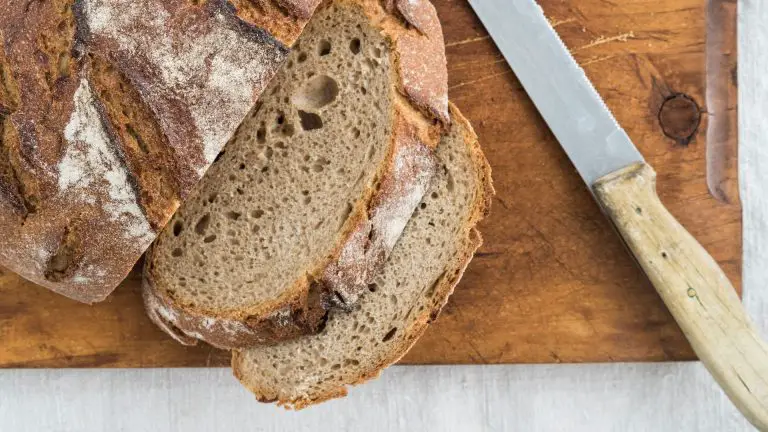Ingredients
Scale
- 250 g whole grain rye flour
- 250 g white wheat flour
- 110 g milk kefir
- 250 g water
- 200 g active whole grain rye sourdough starter (100 % hydration)
- 10 g fine sea salt
Instructions
- In the evening prepare your sourdough starter. Mix 100 g of whole grain rye flour with 100 g of water and one teaspoon of your active (or straight from the fridge) starter and let it ferment until puffed and bubbly (until the next morning).
- In the morning, dissolve all of your risen starter in the mixture of 110 g of milk kefir and 250 g of water. Next, add all of the flour (500 g), and 10 g of salt and mix all ingredients until they come together. Knead the dough for 5 minutes so it becomes a little bit stretchier. Since there is rye flour, the dough will stick to your fingers. Try to wet your hands in-between the kneading from time to time to avoid that.
- Transfer the dough to a clean bowl and let it rise until doubled in volume. Cover it with a lid or a piece of cling film to prevent the dough from drying out. My dough needed three hours to double, yours might take less or more, depending on the environmental temperature and activity of your starter. If you want to speed up the fermentation, place the bowl to a warm place, i.e. slightly warm oven.
- When the dough has risen, take it out to the working surface using your plastic dough scraper. Dust the dough with a flour, flip it upside down and fold it in half and slightly shape it into a ball. Let it rest for 10 minutes. In the meantime, prepare a piece of parchment paper and dust it with any bran (I used spelt bran) or coarsely milled flour.
- Take your bench knife and transfer the dough to a parchment paper. Use your hands to shape the dough to a round shape (see the photo below) and then generously dust it with any of white flours (I used wheat flour). As the dough will rise and expand it will leave a beautiful pattern (see the photo of the baked bread above).
- Leave the bread to rise. My dough took 2 hours, yours might take less or more. As the dough will rise, it will expand and it also might tear at some places, but that’s OK. How will you know your bread is ready to be put in the oven? Check the dough by pressing it lightly with your finger from time to time. If the indent comes back slowly, it is ready.
- At least 30 minutes before the dough is ready to be put in the oven, preheat your baking stone and a separate baking tray that you put on the lower rack to the highest temperature of your oven.
- When ready, load the bread with a parchment paper on a pizza peel and slide it on a baking stone. Throw 10 ice cubes on a baking tray, close the oven door and lower the temperature to 230°C (446°F).
- Bake for 20 minutes, then lower the temperature to 220°C (428°F). Bake for another 30 minutes or until the bread’s crust gets beautifully dark.
- When baked, let it cool on a cooling rack for at least 2 hours before slicing.
Notes
- This bread was mixed in the morning, left to rise for 3 hours at the room temperature, shaped, left to rise again at the room temperature and baked on a baking stone.
- Prep Time: 14 hrs 15 mins
- Cook Time: 50 mins
- Category: bread
